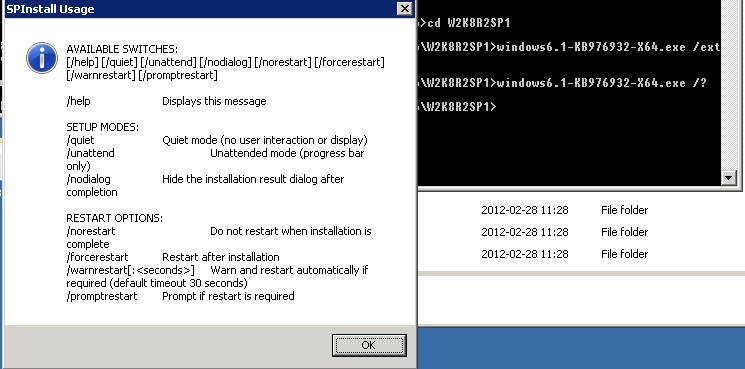Today post is about why sometimes using manual can harm your things.
It is normal, that if you doesn’t know how invoke application in other way than simple double click on exe file, you call the command line
aplikacja.exe /? or aplikacja.exe /help
In the response we obtain in any form some information about command line switches handled by this program. Especially, we can obtain in this way information about advanced method of calling standalone windows operating system updates.
The Windows 2008 R2 Service Pack 1 installator responses with following:

For import process to Microsoft Deployment Toolkit, you have to unpack in any way the exe file to the Windows Standalone Update (msu or cab) files form. On the screen there is no such option.
But after several unsucessful tries I figured out that this command line:
1 | windows6.1-KB976932-X64.exe /extract |
fires up exactly this extraction process without any error message. First simptom of right execution was dialog window with directory tree for choosing proper location for extracted files. There is also the cab file, what is necessary for update usage with MDT 2010 U1.
I am only curious, why Microsoft doesn’t add it to the help screen.
